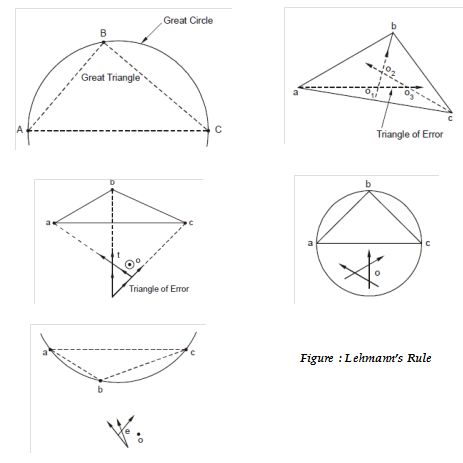Trial and Error Method or Lehmann's Method
This method is very generally used in field and is quite fast and very accurate. The plane table is stationed, levelled and set at station O and is oriented as nearly as possible into correct position either through visual judgment or by use of compass.
Rays Aa, Bb and Cc by plotted points a, b and c are drawn sighting stations A, B and C along aA, bB and cC correspondingly. If the table was oriented correctly to begin with, all these rays will intersect at general point o on the map impaling correct position of station O. Therefore, since the initial orientation was only approximate, a small triangle o1 o2 o3 will be formed in place of a common point o. This triangle is known as triangle of error and is shown in Figure (b).
This triangle is attempted to shrink to a point through trial and error, so that in final positions lines aA, bB and cC pass by a single point o. The procedure applied to achieve this object is known as Lehmann's rule. The triangle created by joining stations A, B and C is termed great triangle although the circle passing through A, B and C as great circle (Figure a).
